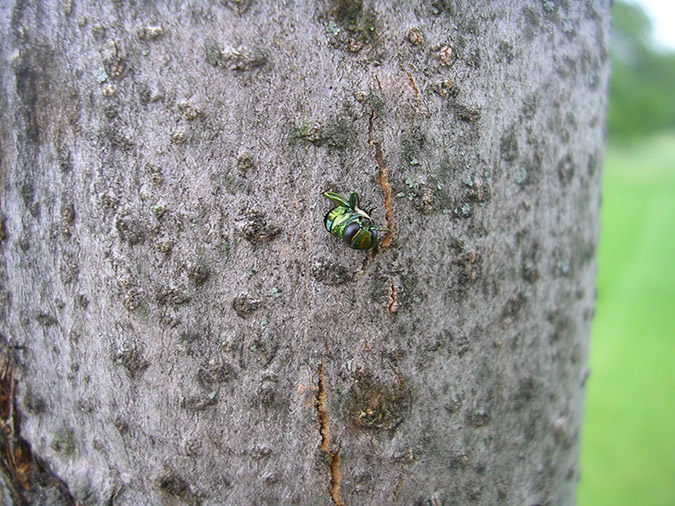| |
Keep an eye out for emerald ash borer this summer
May 24, 2023

Summertime is when we emerge from the cold, get outside, and enjoy the warm sunshine. Unfortunately, we humans aren’t the only ones who feel that way. Starting each May, a destructive pest called the emerald ash borer emerges from beneath the bark to threaten our state’s beautiful and prolific ash trees.
The invasive emerald ash borer has been carving a path of destruction across the U.S. since 2002. It was first spotted in Tennessee in 2010 at a truck stop off of I-40 West near Knoxville. Today, the USDA Forest Service and Tennessee Division of Forestry report that over 240 million ash trees statewide are under threat by emerald ash borer.
According to Nicholas St. Sauveur, an International Society of Arboriculture (ISA) Board Certified Master Arborist® at Cortese Tree Specialists, a Davey company, in Knoxville, emerald ash borer’s feeding disrupts a tree's ability to transport water and nutrients, eventually killing it. Once infected and damaged or killed, these trees are more likely to fall, making them safety hazards as well.
“All of us need to pay attention to emerald ash borer,” said St. Sauveur. “The Tennessee Department of Agriculture has already reported a decline of about 20 million Tennessee ash trees in the past decade, so it’s critical that we raise awareness about this pest.”
Because EAB is present in the Knoxville area, homeowners with ash trees shouldn’t wait to take action. Have a certified arborist inspect your trees–even if they look healthy. Acting early vastly improves the likelihood of your trees surviving and optimizes the effectiveness of treatment. Plus, treating an infected tree is much less expensive than removing and replacing it. If your tree is deemed a good candidate for preservation and a certified applicator applies the EAB treatment correctly and quickly, the procedure is 85 to 95 percent effective.
According to St. Sauveur, the first step is to determine if you have an ash tree in your yard:
1. Look at the bark. Ash trees have a diamond pattern in their bark.
2. Look at the leaves. Ash leaves have 5-9 slender stand-alone leaflets on each leaf stem.
3. Look at the branches. Ash trees are commonly symmetrical, and branches will be paired with another branch on the opposite side of the limb.
Once confirming that you have an ash tree, check for EAB symptoms:
• Increased woodpecker activity
• Chewing damage on edges of leaves
• D-shaped holes in the bark
• Bark splitting or S-shaped tunnels beneath the bark
• Canopy dieback that typically begins in the top one-third of the canopy
• Missing buds on the outer limbs of the trees
“It may not be possible to treat all the ash on your property, so identify the trees that are most valuable to you to prioritize for treatment,” says St. Sauveur. If one of your trees needs to be removed and treating it isn’t an option, do so quickly to reduce the risk of spreading EAB to other trees, and be sure to replace it with another kind of tree. There are wonderful large-canopied trees to replace ash trees, such as dawn redwood, ginkgo, pin oak, sugar maple, and white oak, plus many others.
If you’re looking for something else or need help deciding what to do with your ash trees, call your local arborist to help.
Questions? Contact St. Sauveur, Cortese’s local arborist, by calling 865-298-3357 or visiting www.cortesetree.com/local-offices/knoxville-tree-services/. |



